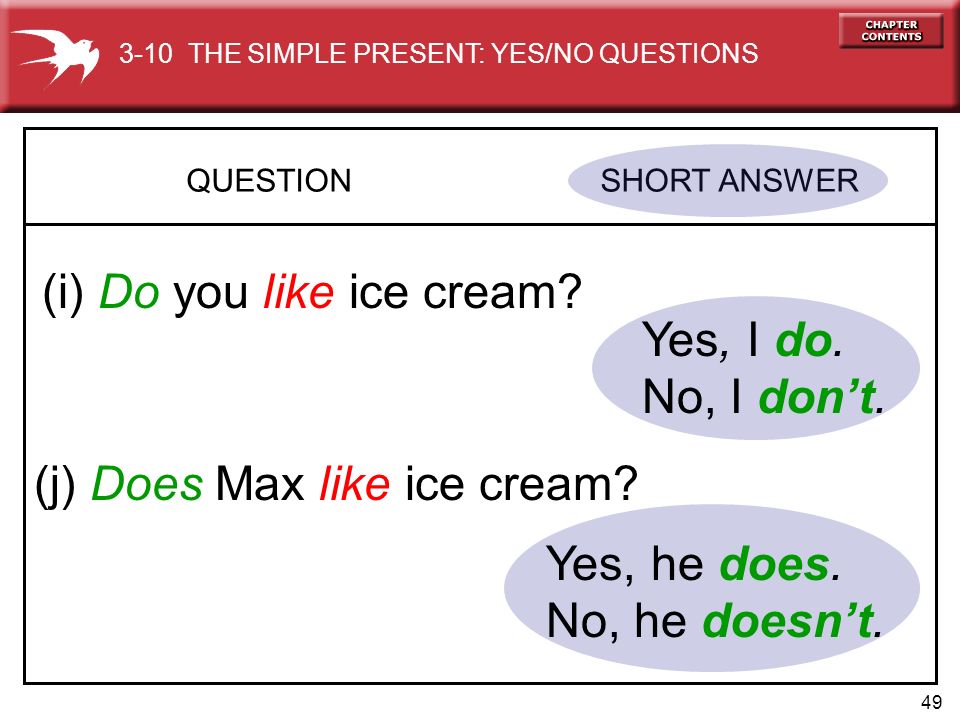The Present Simple tense describes things that are true, actions that happen many times, and simple statements of fact.



Negative sentences in Present Simple
To make negative statements in Present Simple, we use:
do not (don’t) / does not (doesn’t) + the base form of the verb (infinitive without ‘to’)
Compare:



| Note: If you use ‘doesn’t’, don’t add ‘-s’ to the main verb. – She doesn’t think. NOT: |
The verb ‘be’
When we use the verb ‘to be’ we don’t use ‘do’ or ‘does’. We say ‘am/is/are + not’.
- I am from France. – I’m not (am not) from France.
- You are late. – You aren’t (are not) late.
- He is allergic. – He isn’t (is not) allergic.
Questions in Present Simple
To make questions in the Present Simple, we use ‘Do’ or ‘Does’. When we ask questions in English, the word order is different:
Do/Does + subject + verb
- Do you like oranges?
- Does he work here?
- Where does this train stop?
When do we use do or does?
| Subject | Do/Does | Example |
| I | do | Do I have a coat? |
| You | do | Do you have a coat? |
| He/she/it | does | Does she have a coat? |
| We | do | Do we have a coat? |
| They | do | Do they have a coat? |
Yes/No questions
To create a question that will be answered with a ‘yes’ or ‘no’, use ‘Do‘/’Does‘ (or ‘Don’t‘/’Doesn’t‘ for a negative question) + the base form of the main verb.



- Do you like cake?
- Does John walk to school?
- Do Lauren and Sarah have bicycles?
- Do we need more milk?
| Note: If you use ‘Does’, don’t add ‘-s’ to the main verb. – Does he write books? NOT: |
Special questions
Special questions (also known as wh-questions) are questions that require more information in their answers. They are made using wh- words such as what, where, when, why, which, who, how, how many, how much.
To make a special question, use the same word order as with yes-no questions but put a wh-word before the verb ‘do’ or ‘does’. The structure is:
| wh- word | do or does | subject | main verb | |
| Where | does | Libby | go | to school? |
| Why | do | I | hate | him? |
| How | do | you | like | your haircut? |
| When | does | the train | arrive? |
The verb ‘be’
With the verb ‘to be’, we do not use ‘do’ or ‘does’. We use ‘am’, ‘is’, or ‘are’. The word order is the same.
- Are you at home right now?
- Is he angry at me?
- Why are you here?
- What is the answer?
- Where are they?
Watch this video from GoEnglish and revise how to form positive, negative and interrogative forms of Present Simple:
See also: